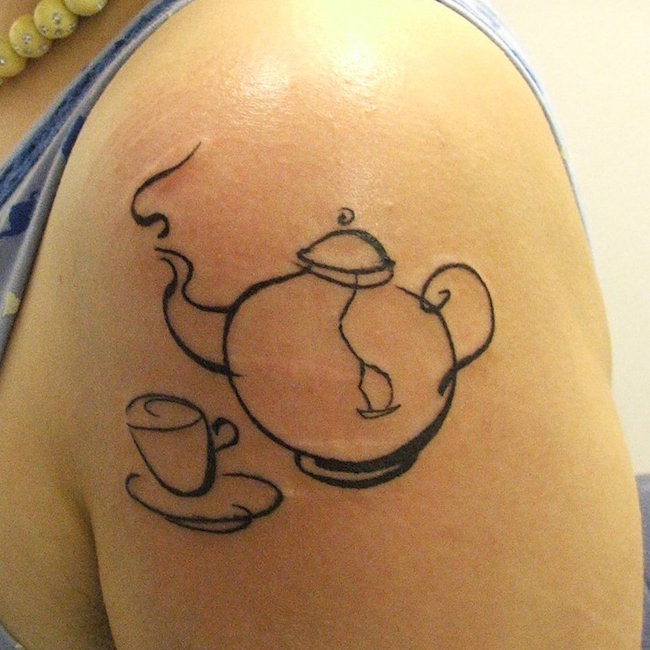The tech-heads at the American Ceramic Society posted something recently which explains the role ceramic materials play in creating tattoos, which we hear are all the rage among kids today. They were responding a short video by the American Chemical Society that explains why tattoos are permanent.
The fact that tattoo ink starts as ceramic compounds was news to us. From the Society:
Tattoo ink consists of solid pigment particles in a liquid carrier. Different pigment compounds create different ink colors, and many of those pigment particles just happen to be ceramic materials.
Here’s the full breakdown of what common pigment compounds, many of which are metal oxides, color tattoo inks.

Once those tiny flecks of ink get pounded into your dermis a few thousand times due to the action of a tattoo needle, your body does the rest of the work by kicking off an immune response to repair the wound. Cells called macrophages attempt to clean the ink from the wound, but end up getting stuck in the dermis, making the tattoo stay more-or-less vibrant for the rest of your life.

Now, maybe that list above raised some eyebrows. One reader noticed that a few of the compounds— cinnabar, cadmium and chrome oxides— are toxic materials. The Society found that the FDA does not regulate tattoo ink or pigments and that research has been done to determine exactly how much of a health risk this is. It’s not a clear-cut answer, not enough to dispel all worry. But then again, tattoos, at their core, are about taking risks with your body and occasionally making a choice you regret. To allay our anxiety, we’ll just consider heavy metal exposure in tattoos as part of the fun.
At the First International Conference on Tattoo Safety, held in Berlin in June 2013, researchers at the National Institute of Health in Rome, Italy—among many others—presented their scientific research on tattoo safety. Their abstract, titled “Heavy metals in tattoo inks,” states, “Titanium, barium, aluminum, and copper are often used as colorants in tattoos; more worrisome, inks using nonmetal colorants may include traces of antimony, arsenic, cadmium, chromium, cobalt, lead, and nickel.”
According to a Scientific American article, red tattoo inks cause the most problems. The heavy metals in red inks and other ink colors can cause allergic reactions, skin conditions, scarring, and mercury sensitivity.
Those problems seem to be relatively rare, although I couldn’t find any statistics pinpointing the exact number. General allergic reactions to tattoos, not necessarily attributed to metal-containing inks, are themselves relatively infrequent.
A rather informal poll by NBC News in New York City earlier this year put that number at 4% of inked people experiencing a short-duration allergic reaction and 6% experiencing problems lasting more than four months. But those problems can be attributed to a range of issues, including individuals’ immune systems, other compounds in tattoo inks, and problems with hygiene or practice in specific tattoo parlors.
Love contemporary ceramic art? Let us know what you think in the comments.



Add your valued opinion to this post.